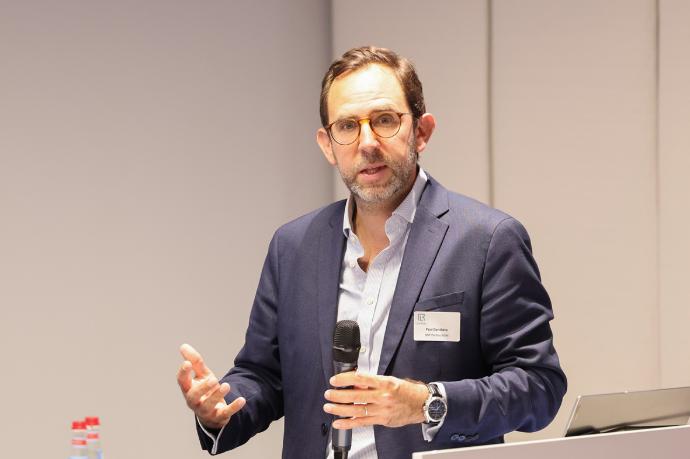Read the full newsletter here
‘Healthcare real estate offers long-term opportunities across Europe’
As demographic shifts and evolving care needs reshape the healthcare sector, BNP Paribas REIM is stepping up its commitment to this asset class. Paul Darribère, Global Head of Healthcare & Hospitality of BNP Paribas REIM, explains why the sector’s fundamentals remain solid—and how tailored investment strategies can unlock resilient, long-term value across the European market.

Paul Darribère
Global Head of Healthcare & Hospitality of BNP Paribas REIM
What recently led BNP Paribas REIM to create a division dedicated to hotel and healthcare assets in Europe?
We’ve been active in these asset classes for many years. Our first dedicated healthcare vehicle was launched in the early 2010’s. In the hotel segment, we began investing in camping accommodation as early as 2013, and in 2017 we created a dedicated fund for these specific assets. Several structural trends have driven our engagement. In the hospitality space—particularly in open-air accommodation—there is growing interest from holidaymakers across Europe. At the same time, the sector is consolidating, with larger operators and a clear move upmarket. In healthcare, we are seeing similar dynamics. Hospital, clinic, and retirement home operators are becoming increasingly large-scale, allowing them to better absorb rising costs. To support their development and internationalisation through real estate investment, we felt it was essential to build a dedicated team with the right expertise to assess opportunities and respond to the specific needs of each sector.
What makes healthcare real estate attractive today? How do you see this asset class evolving?
Healthcare is, and will remain, a fundamental concern for every society. Beyond that, several key trends are worth highlighting. Population ageing, and the growing number of elderly and highly dependent individuals, are generating rising demand. This is reflected in public healthcare spending, which now accounts for 8 to 12% of GDP in many countries. There is a pressing need for infrastructure capable of accommodating and supporting patients or residents for varying lengths of time. Across the entire healthcare continuum—from short-stay clinics to long-term care facilities—demand is on the rise. We’re also seeing healthcare providers expand the range of services they offer, which in turn increases the need for suitable infrastructure.
What types of real estate fall under this asset class?
There is a broad spectrum of property types across short, medium, and long stays, covering the entire healthcare value chain. Short-stay facilities include outpatient services, diagnostic imaging (such as X-rays or MRIs), or surgical procedures requiring only a few hours to a few days. The rise of ambulatory care is helping to reduce average lengths of stay. Medium-stay facilities typically support patients for a few weeks, for instance during rehabilitation or extended treatment for temporary conditions. Long-stay assets include nursing homes and facilities for highly dependent individuals. We’re also seeing hybrid formats emerge—such as co-living or daycare solutions for seniors who remain independent but seek support or a socially connected living environment. At BNP Paribas REIM, we are actively investing across all these segments.
How do you assess opportunities in this field, in Luxembourg and across Europe?
Opportunities are plentiful, driven by the trends we’ve just discussed. But investing in healthcare real estate requires a clear, disciplined strategy. These assets are highly specialised—they are not generic buildings, but rather operational tools at the heart of care providers’ activities. That’s why we work closely with operators, building long-term relationships based on trust and transparency. The quality of care services plays a key role in our decision-making. Given that these buildings have limited reconversion potential, we prioritise stable, long-term partnerships, typically with long leases that can be renewed. It’s also critical to consider the needs of end users. While public reimbursement for care provides a solid foundation for operators’ revenues, government contributions are often capped—and costs (energy, staffing, etc.) continue to rise. Operators therefore need to be sufficiently robust and have enough scale to remain sustainable.
For investors, the appeal of healthcare real estate lies in its resilience. Demand is structurally non-cyclical, providing stable, long-term income regardless of broader market fluctuations.